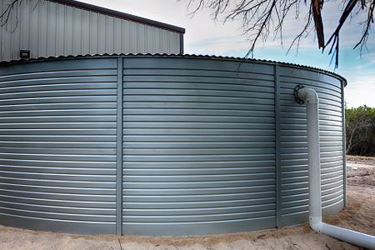Advancing The Potential For Stormwater Reuse: Investigation Of Water Quality And Treatment
By U.S. EPA

Managing stormwater runoff is a complex environmental challenge for communities across the country. As stormwater runoff flows into nearby waterways, it can collect various pollutants including trash, chemicals, oils, and dirt, which can lead to environmental and public health impacts. During heavy storm events, runoff may combine with domestic and industrial wastewater in sewer systems and contribute to sewer overflows. Finding sustainable solutions to the impacts of stormwater runoff can be challenging. Stormwater collection systems are often used to capture rainwater before it can pick up harmful contaminants and deposit them into waterways. But then the question becomes: what to do with the collected rainwater?
Water reuse, also known as water recycling, is the action of reclaiming water from a variety of sources and reusing it for beneficial purposes such as agriculture, irrigation, potable water supplies, groundwater replenishment, industrial processes, and environmental restoration. Water reuse enhances sustainability, water security, and resilience by providing alternatives to existing water resources. Stormwater reuse involves storing water runoff from storm events and using it for other purposes.
There is limited data to determine the suitability of stormwater for direct reuse in surface irrigation systems. In locations with limited water supplies, water reuse can conserve resources and benefit surface water quality.
To assess and characterize the pathogenic, microbial, and chemical content of collected stormwater, EPA researchers collaborated with the Minnesota Department of Health, local universities, and other stakeholders on a project to evaluate samples from stormwater collection systems that could potentially be harvested for landscaping and agricultural irrigation near Chicago, Cincinnati, Cleveland, and Minneapolis.
Anita Anderson of the Minnesota Department of Health stated, “This project will help Minnesota to keep moving forward with stormwater reuse as a tool to conserve water resources and improve surface water quality while protecting public health.”
For this study, samples were collected from various land use or collection areas such as rooftop collection tanks, permeable pavement catch basins, parking lots, underground storage tanks, and vegetated lands. The project team also collected information on the characteristics of the sample sources, including infrastructure age, tributary area, land use (e.g., roofs, parking lots, fields), end-use (e.g., irrigation, vehicle wash, graywater), size of storage, treatment (e.g., sediment screens, filtration, chlorination, UV) and storage type (e.g., above ground and underground, tanks, earthen basins).
This research project provided relevant information on the extent of physical, chemical, and microbial contamination of reuse waters and suitability of stormwater reuse for direct irrigation. While the study found that several waterborne pathogens were present in untreated stormwater samples, filtration and disinfection were found to be effective treatment technologies to reduce public health risks. A few samples contained low levels of copper and manganese that exceeded recommended U.S. EPA irrigation water guidelines.
EPA provided project partners with preliminary water quality results during a virtual presentation on “Characterizing Stormwater for Reuse in Irrigation” shared at the Environmental and Water Resources Institute World Environment and Water Resources Congress in June 2021.
The results of this research will help partners make informed decisions about stormwater reuse projects and will also fill data gaps related to stormwater water quality and reuse practices. This project has also provided information for communities to address financial challenges related to the costs to construct, operate, and maintain stormwater infrastructure.
In 2021, EPA announced the establishment of the Sewer Overflow and Stormwater Reuse Municipal Grants (OSG) program, a program aimed at awarding grants to states, the District of Columbia, and U.S. territories for the purposes of supporting critical stormwater infrastructure projects in communities. More information about EPA’s OSG program is available here.
